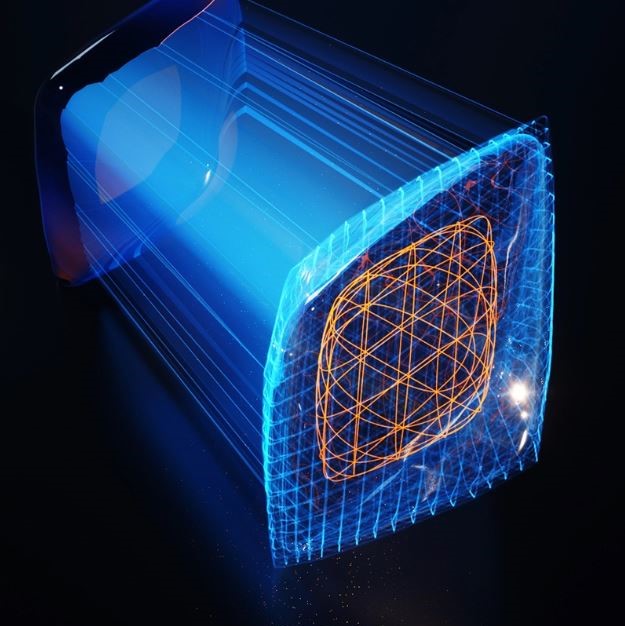
[ad_1]
A new type of battery for electric vehicles (EVs) with longer lifetime, greater capacity to weight ratio and faster charging could revolutionize the EV industry. But with a materials space composed of millions of candidates, each with different properties and failure mechanisms and the potential for different combinations of multiple materials, the design space is absolutely huge. Researchers are turning to AI to help identify new materials, understand material properties and develop new batteries.
Materials database
A team at the University of California, San Diego, has used an AI called M3GNet to predict the properties of synthesized materials and put the information into a database, matterverse.ai. The team is using the database to search for safer and more energy-dense electrode and electrolyte materials for rechargeable lithium-ion (Li-ion) batteries.
M3GNet predicts material properties based on the structure of molecules, analogous to Google DeepMind’s protein folding algorithm. M3GNet was trained on a huge database of energies, forces and stresses of existing materials called the Materials Project. The data is used to predict the energies and forces in new combinations of atoms.
The team also used the inorganic crystal structure database (ICSD), which contains thousands of prototype materials, as a starting point. They substituted atoms for different elements to create 31 million potential new materials, of which they think around 1.8 million will be stable enough to be created in real life.
Predecessors to M3GNet were either fitted to narrow chemistries, or too inaccurate for general use, the researchers said in their paper.
M3GNet can also be used to predict lithium conductivity—how fast Li-ions diffuse through a material—the property which controls how fast batteries can charge.
Failure mechanisms
Separate research from Stanford University is using AI to analyze atomic-level microscope images to figure out the mechanisms that wear out Li-ion battery electrodes over time. If we can figure out exactly how these mechanisms work, we can use that knowledge to build batteries with longer lifetimes.

During a charge cycle, the electrodes expand and contract with temperature changes. This puts the material under strain, causing cracks to form. AI is helping visualize this mechanism by interpreting microscope images from the latest high-resolution X-ray, electron and neutron microscopy.
The researchers studied this mechanism in Li-ion phosphate (LFP) EV batteries. LFP batteries have a slightly lower energy density than other types, but they are gaining popularity as they avoid the supply chain problems related to cobalt and nickel in other batteries.
AI has been used to predict the elasticity and deformation properties of LFP’s electrode material as it charges and discharges for the first time. The technology has also been used to study the same material’s properties while it is metastable (in a partly stable state that can become another material under the right conditions, or over time).
Understanding these mechanisms could lead to developing new software to control the charging and discharging cycle in such a way that minimizes the conditions leading to cracks. The result would be an EV battery that lasts longer.
The researchers say this technique can be generalized for other materials, and could allow the exploration of alternative electrode materials.
Material combinations
Commercial EV batteries use a number of different materials, with chemicals mixed together in a proprietary electrolyte recipe—usually a salt dissolved in a liquid solvent, but with multiple other secret ingredients. This often means there are at least three or four different components.
Combinations of these ingredients in different concentrations can change the performance of the electrolyte, so it is crucial to get the balance right. The recipe needs to be optimized in multiple dimensions, since the best option for charge time may not be the same as the best option for lifetime, for example.
A study at Carnegie Mellon University combined a robotics platform with AI to find the best combination of materials for EV battery charging rate. The experiment used a closed-loop approach—without humans— for the first time in nonaqueous Li-ion electrolyte solutions.
The robot injected combinations of solvents and additives in different concentrations into test batteries, with the AI experiment planner deciding which combinations to test. The AI operated in a design space with over 1,000 possible combinations of three different ingredients. It started with five random combinations and optimized from there. After two days, it had performed 42 experiments and identified six promising electrolyte recipes. The best was 13% better than the baseline on charge time.
The researchers say the robotic technique combined with the AI worked 6× faster than a person could and used a third of the chemical supplies. Future versions will optimize not just charge time, but other variables too.
The post Can AI Invent New Battery Materials? appeared first on EE Times.
[ad_2]







